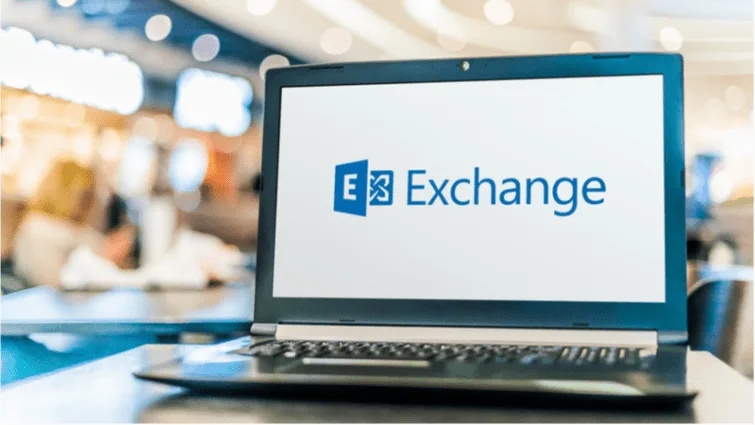Microsoft Exchange Server security is an essential component of any organisation’s IT security posture. This is why enterprise-level enterprises have implemented and consistently maintain a comprehensive range of policies and procedures for controlling access to mailboxes, messages, and other items in the company’s Exchange Server environment. The aim of these security best practices is to prevent unauthorised access, alter, or destroy data that is stored or transmitted within the company’s Exchange Server environment. This policy set involves all aspects of the Exchange Server hierarchy, including the main Exchange server, mailboxes, and the remote data store.
Patches and upgrades
Microsoft routinely releases, patches, software upgrades and other essential resources to maintain stable Exchange servers at optimal performance. Microsoft Exchange Server On-Premise Mitigation Tool. In recent cyber attacks against Exchange servers, the development of this easy-to-use, automatic tool has met the complex needs of corporate users who utilise out-of-date or out-of-network versions of Microsoft Exchange Server. When installed on Exchange Server 2021 servers, this tool automates the complete process of scanning for security holes and subsequently fixing them.
Security Requirements
Microsoft Exchange Server security requirements include preventing hackers and malware from gaining access to the information and data that are located in the company’s network perimeter. There are many ways for attackers to get into the business’s network, and Microsoft Exchange Server security best practices to help users avoid the most common means of attack. Some of the most prevalent methods include spear phishing, virus attacks, data theft, spoofing, and spamming. By implementing proper anti-virus and anti-spam programs and using appropriate security filtering and monitoring solutions, the threat to the company’s data can be diminished. These measures are often considered after the data has already been compromised by outside sources.
Microsoft Exchange Server security best practices also include performing frequent scans to identify new threats and modify their techniques to avoid exposure. Scanning frequently not only prevents the newest threats from being added but also helps stop the ones that have been identified. Users can schedule daily, weekly, monthly, or even weekly security checks that target specific objects or categories of objects. Some of these categories include financial data, employee records, network areas, and others.
Antimalware
There are many types of malware that can infect an Exchange server, and third-party scanning is essential to identify and eliminate these potential threats. Microsoft Outlook is one of the most popular email clients used by employees in any office environment. The threat of phishing scams, which ask for personal information such as passwords or bank account information, has made the prevention of phishing a top priority for employers. To enhance network security, businesses should install anti-malware and anti-spam programs. Many third-party anti-malware and anti-spam products are available in the market today. They can be easily downloaded from the Internet and can instantly be applied in the Exchange Server to prevent the spread of viruses.
Sophisticated antimalware applications are designed to detect and eliminate malware, spyware, and adware. Microsoft Exchange Server security configuration is a vital aspect of the organisation’s e-mail system. Without this necessary component, malicious attackers would easily be able to access, analyze, and exploit the organisation’s valuable information. With the aid of anti-malware scanners, employees can scan emails and documents for signs of malware. If any suspicious elements are found, the appropriate actions are immediately taken.
Exchange Server Security Configuration
Microsoft Exchange Server security configuration allows organisations to effectively block spam while permitting the exchange of e-mails and other network activities. It provides the best practices for preventing malware from gaining access to your network. When a company adopts Microsoft Exchange Server as their preferred delivery system, it is more likely that the security configuration will be a lot tighter than with other systems. Anti-malware applications are the best ways to ensure the security of the system. The anti-malware scans to ensure that the security configuration of the exchange is maintained at all times. Moreover, the anti-spam features make it easier for the network administrators to prevent the unwanted delivery of e-mails that contain harmful content.
Improving Security
To improve the security configuration of the exchange server, it is advisable to install and use anti-malware applications that can detect and remove malware from the system. This type of application will enable you to manage the threats efficiently and in a more convenient way. Moreover, it can also update the existing anti-malware applications to ensure that the latest threats are removed from the system. By doing this regularly, you can ensure that the system is always safe and secure. Moreover, installing the latest anti-malware version of the anti malware tool is also one of the best practices for Microsoft Exchange Server security configuration.
10 Microsoft Exchange Server security best practices
- Keep Exchange servers up to date
- Launch specialised Microsoft Exchange security utilities
- Deploy firewalls
- Use Exchange Server security programs
- Secure the network perimeter supporting Exchange
- Monitor Exchange servers
- Use allowlists and blocklists
- Use certificates when dealing with external services
- Limit administrative access to internal users
- Enable role-based access control and require strong passwords
SSL Certificates
SSL Certificates, a Short Term Information Service Protocol, are used by web servers and web browsers to authenticate and verify the authenticity of a website’s SSL Certificate. In cryptography, a private key certificate, also called an SSL certificate or digital certificate, is an electronic proof of the authenticity of a private key. A SSL Certificate, usually issued with the name of the issuing company, contains information such as the issuer’s name, signature, date, fingerprint or other digitally signed data. It usually consists of two parts: the certificate of authenticity and the certificate of trust. This document proves that the private key that is being provided is one that the entity providing the certificate has authorized, and that the information provided is true and valid under the laws of the issuing country.
An SSL Certificate also proves the identity of the domain owner. For instance, a business website that offers domain names may require users to provide their credit card information in order to access a particular domain name. Without the SSL Certificate, users would not be able to access this domain name. SSL Certificates not only plays a vital role in the authentication process, but they also protect the sensitive information that is sent over the internet. Hence, it is very important that the organisation that issues SSL Certificates complies with all the necessary security standards.







